Video Gamer is reader-supported. When you buy through links on our site, we may earn an affiliate commission. Prices subject to change. Learn more
Breath of the Wild is one of the best games ever made. That is not a controversial statement in the slightest, and while many consider Tears of the Kingdom to have surpassed it, Breath of the Wild set the standard. It revolutionised the Legend of Zelda formula with its massive yet remarkably dense open world, was the killer app of the Switch’s launch (and the swan song of the Wii U’s death), and introduced countless new fans to the world of Hyrule.
Despite its many, many reasons for critical and commercial success, there are still a few elements of the game that didn’t quite work for some players: incredibly fragile weapons; the never-ending Korok seed hunt and, for the queer community, its inclusion of anyone not straight or cis. That’s not to say Breath of the Wild doesn’t include these people at all, more so that its representation leaves something to be desired. With Tears of the Kingdom out now, it’s worth revisiting how its prequel represented the queer community, and how this new game improves on it.
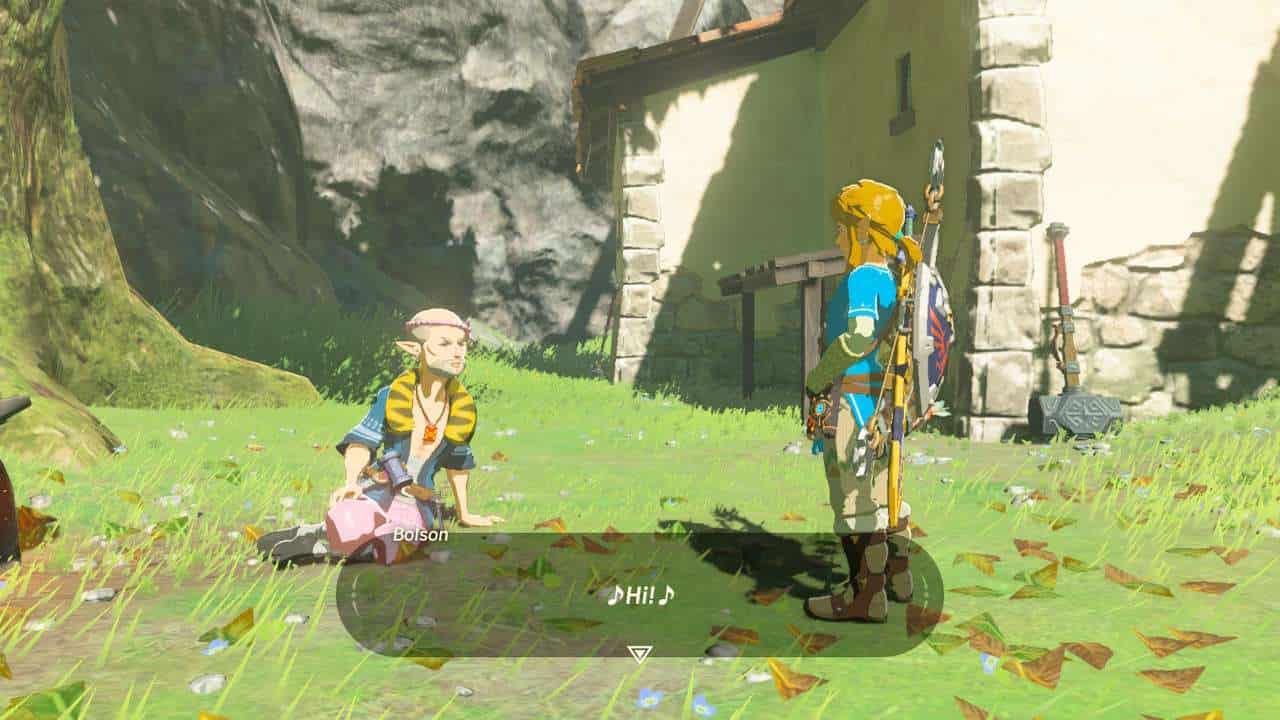
Only a few hours into Breath of the Wild, you’ll find the eccentric Bolson hard at work in Hateno Village. Patriarch of his eponymous construction company, Link’s main interactions with Bolson involve his restoration and decoration of Link’s quaint Hylian cottage. Offering an entire house for only three thousand rupees and thirty bundles of wood, alongside offering refurbishments such as weapon mounts and flower beds for only a hundred rupees apiece, Bolson is every tenant’s dream.
However, the first thing you notice about Bolson isn’t his expansive building empire or respectable prices – it’s his aesthetic. With his vibrant pink shorts and headband, a heavy, gorgeous charm around his neck, and only his right ear pierced (a common, if somewhat fictionalised and outdated, choice made by homosexual men), there’s no question that Bolson is at least implicitly gay. In case there was somehow any doubt, his reaction to seeing Link shirtless is to exclaim “Whoa my! Aren’t you perky?”.
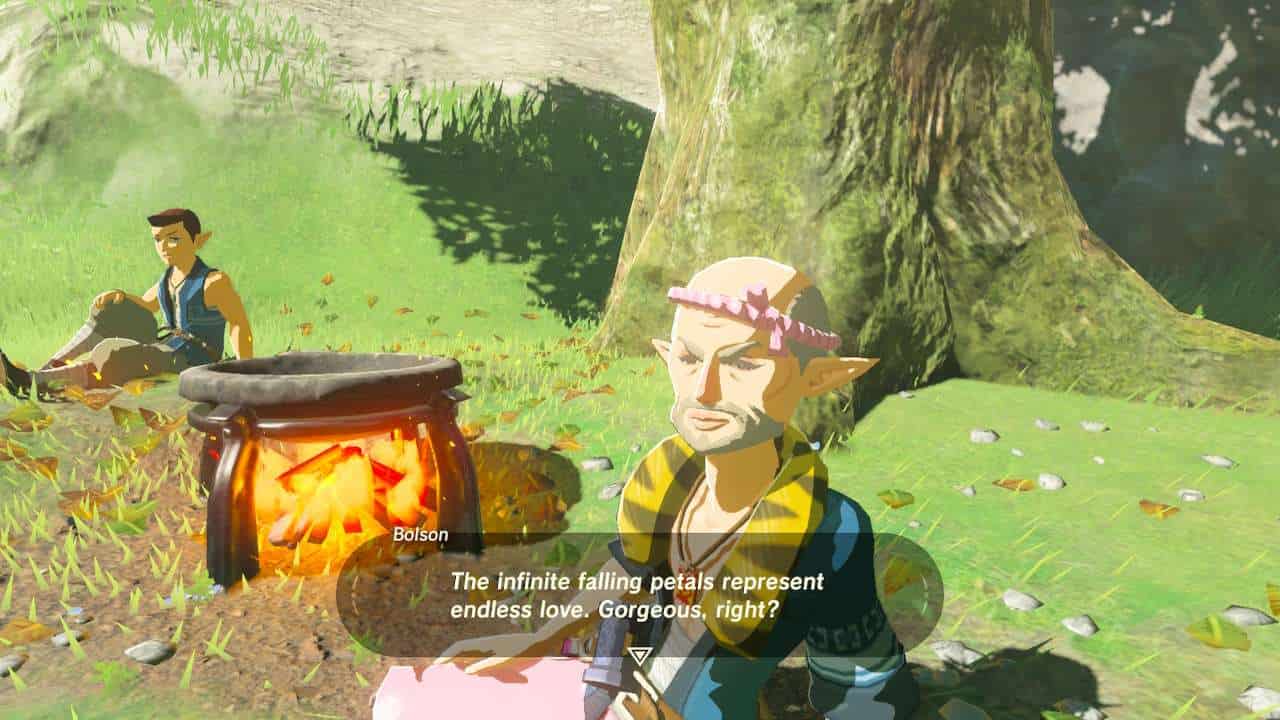
Including a gay character in media is generally a good thing, but just existing as implicitly gay doesn’t inherently make for good representation. Instead, what makes Bolson work is his impact within the narrative as a gay character. More than just a one-off character who you can just speak to and forget, Link literally cannot own a home without Bolson. He is also the catalyst for the construction of the inclusive interspecies settlement Tarrey Town, sending his colleague Hudson off to build it from the ground up and eventually acting as the effective best man to Hudson and Rhondon’s wedding hosted there.
He happily muses on the flower petals that fall at its close with “the infinite falling petals represent endless love. Gorgeous, right?”. In fact, the beauty of the lovely couple soon inspires him to retire from his company and look for a spouse of his own (note the lack of gender specific noun!). Bolson is responsible for a lot of Breath of the Wild’s lengthier side content, and that should be celebrated, as it avoids the trope of a gay character being used only for comedy at their expense. As Natalie Schriefer writes for Videodame, “Though Bolson is read almost universally as gay, and therefore marginalised, there’s still room to read his character as a punching-up.”
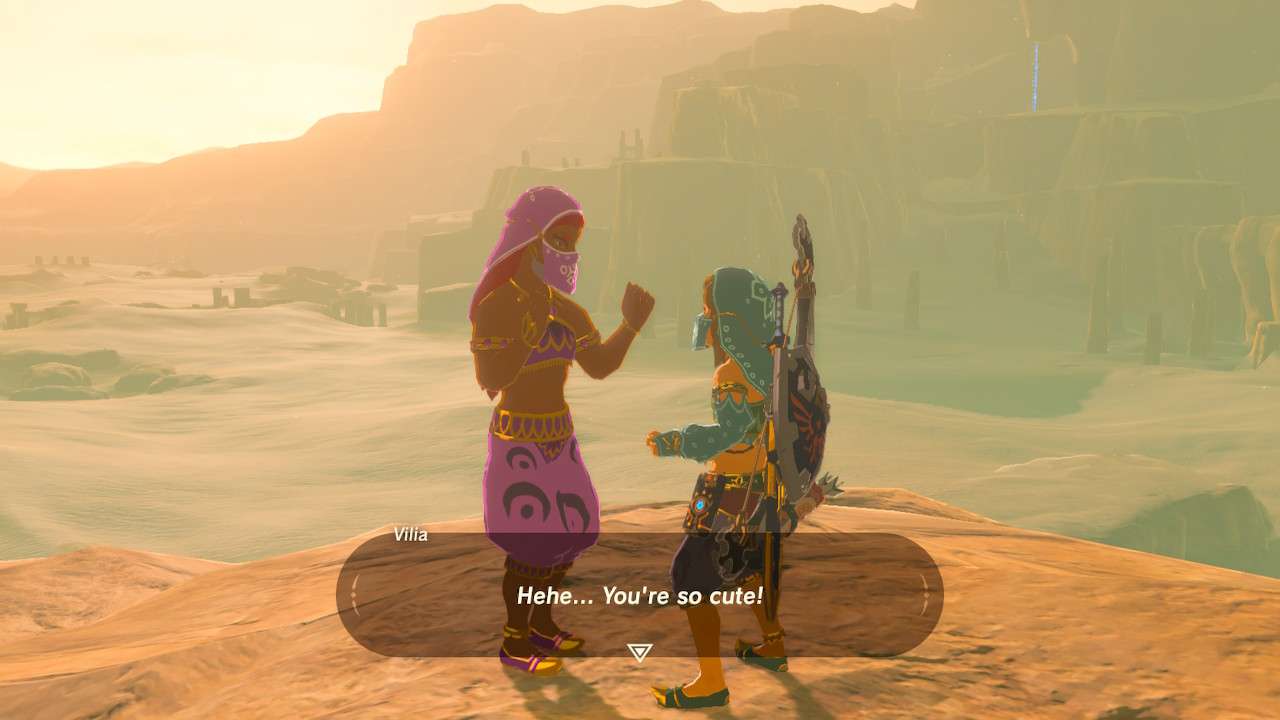
On the other end of the queer representation spectrum, we have Vilia. Encountered among the flowing sands of Gerudo, she can be found atop a tall building, as if hiding from the Gerudo people in the town beneath. Her hidden-away nature seems odd, considering she is a silk-wearing woman just as all others in the town. When Link speaks to her, she offers him the Gerudo Vai armor in order for him to enter the town formally, as Link’s Hylian male body bans him from entering their matriarchal sanctuary. All of this context sets up a singular moment in the end of Link’s interaction with Vilia – when a gust of wind lifts her veil from her chin, revealing what seems to be a beard.
Suddenly the previous mutterings from other citizens about ‘a man sneaking into Gerudo Town’ make more sense. Unfortunately, these comments, Link’s seemingly shocked expression and the sudden, almost comedic timing of the reveal land this scene, and Vilia’s existence as a whole, squarely in the ‘questionable’ category of representation. As noted by Jennifer Unkle in Paste Magazine, ‘Nintendo makes it clear that they find my identity both illegitimate and humorous’. It’s also worth mentioning her role in the story is to give Link’s women’s clothes in order to pretend to be a woman and infiltrate a women-only space – making reality out of a baseless, fearmongering concept that is still used by transphobes to justify their bigotry even today.
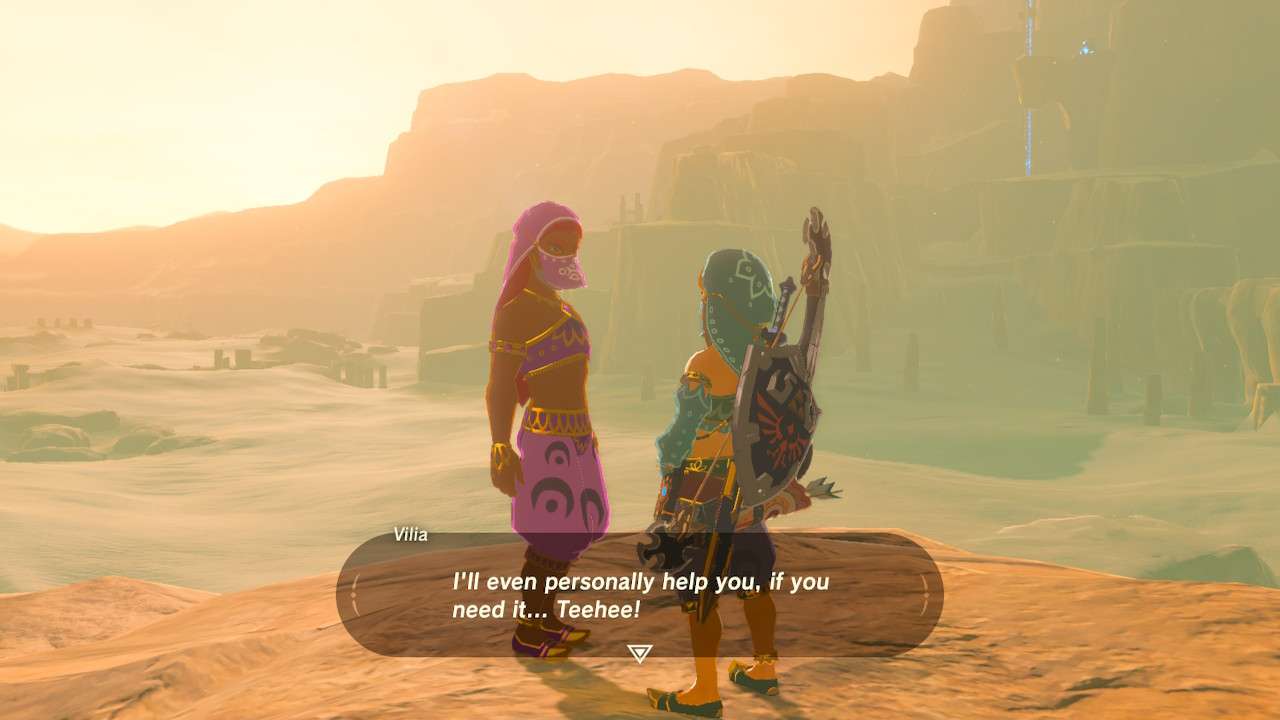
Being the first explicit trans woman in the series is lovely, but it’s difficult to see it as a positive thing when her introduction seems built around a joke at her expense. Thankfully, there are some pleasant aspects in Vilia’s inclusion. At no point does she question her identity as a woman and nor does Link; although his initial shock and horror isn’t great, he seems to move on quickly and accept Vilia as she is. They also exchange a flirtatious little moment when Link tries on the Gerudo Vai outfit before her eyes, squealing happily and telling him “You look adorable!” The writing around Vilia’s existence is certainly problematic, but at least she can confidently be herself despite it all.
Moving forward seven years, Tears of the Kingdom is another smash hit, somehow improving upon its predecessor in almost every way, and this across-the-board enhancement extends even to its queer representation. First off, Bolson returns! Looking as stylish as ever, he appears once more near Lurelin Village, offering Link a hefty side quest to rebuild Lurelin after it’s become infested with monsters. Over time, Bolson puts his restoration skills to work together with Link to repair old buildings and construct entirely new ones, eventually leaving Lurelin in a much better state than before.
Evidently, despite his company being taken over by Hudson and his apparent retirement, Bolson is still quite the capable and motivated builder, maintaining his status as a prominent and important queer side character in this sequel. Vilia, however, does not return. There is no obvious reason for this, but it is possibly because her role in the story – showing players that ‘men’ can enter Gerudo Town if dressed as a woman – was no longer necessary, as Gerudo captain Buliara simply allows Link into the town due to matching chief Riju’s description of the hero. Regardless, her absence is definitely felt.
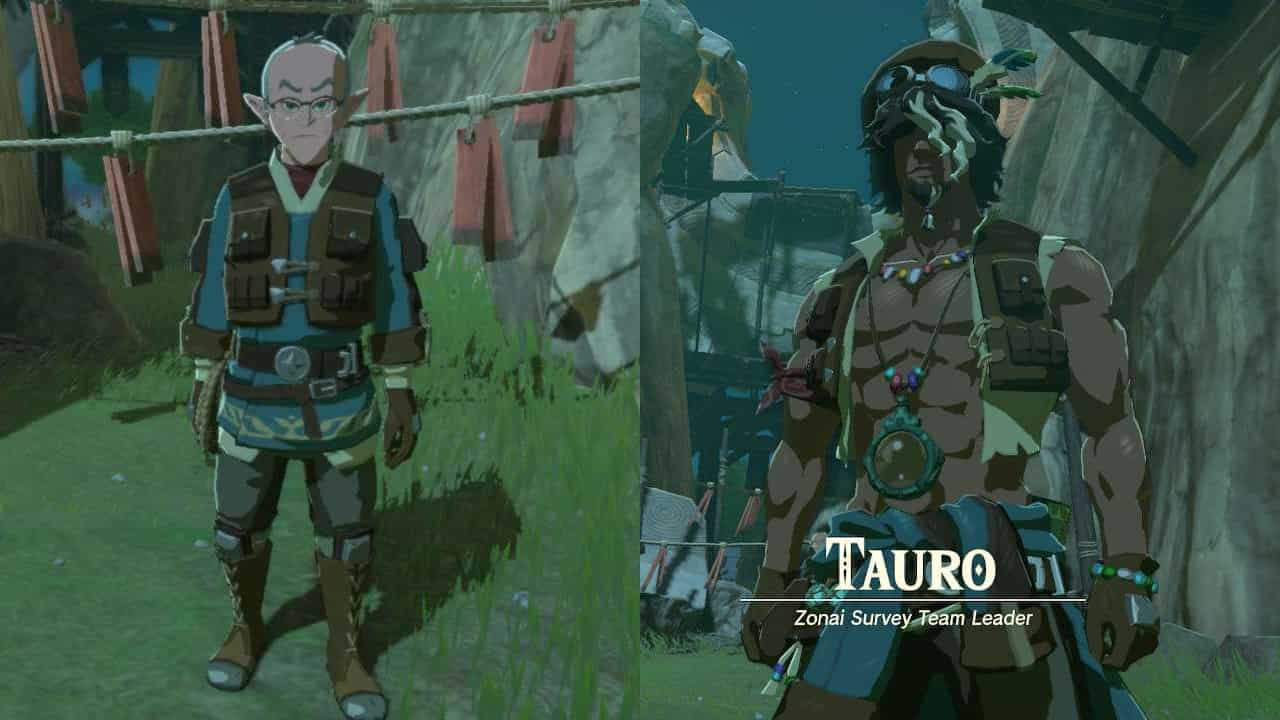
Tears of the Kingdom’s most important addition for queer representation lies in Kakariko Village, in an unassuming researcher’s diary entries. Calip, returning from Breath of the Wild, works as part of the Zonai Survey Team alongside a new character, the burly and handsome Tauro. While the two are presented as simple co-workers in their professional lives, Calip’s poorly hidden diary implies very different feelings on his end:
‘While Tauro and I were taking a break, he asked me, “Hey, Calip, what attracted you to join the Zonai Survey Team?” A little flustered, I answered that I heard its research division was led by a brilliant man by the name of Tauro. Because of you, essentially.
I meant it sincerely, and in my heart, I longed to continue…
“You’re not like these other dullards, you know. You immediately grasp the breadth of my vision.”
Of course, no such thing passed my lips.’
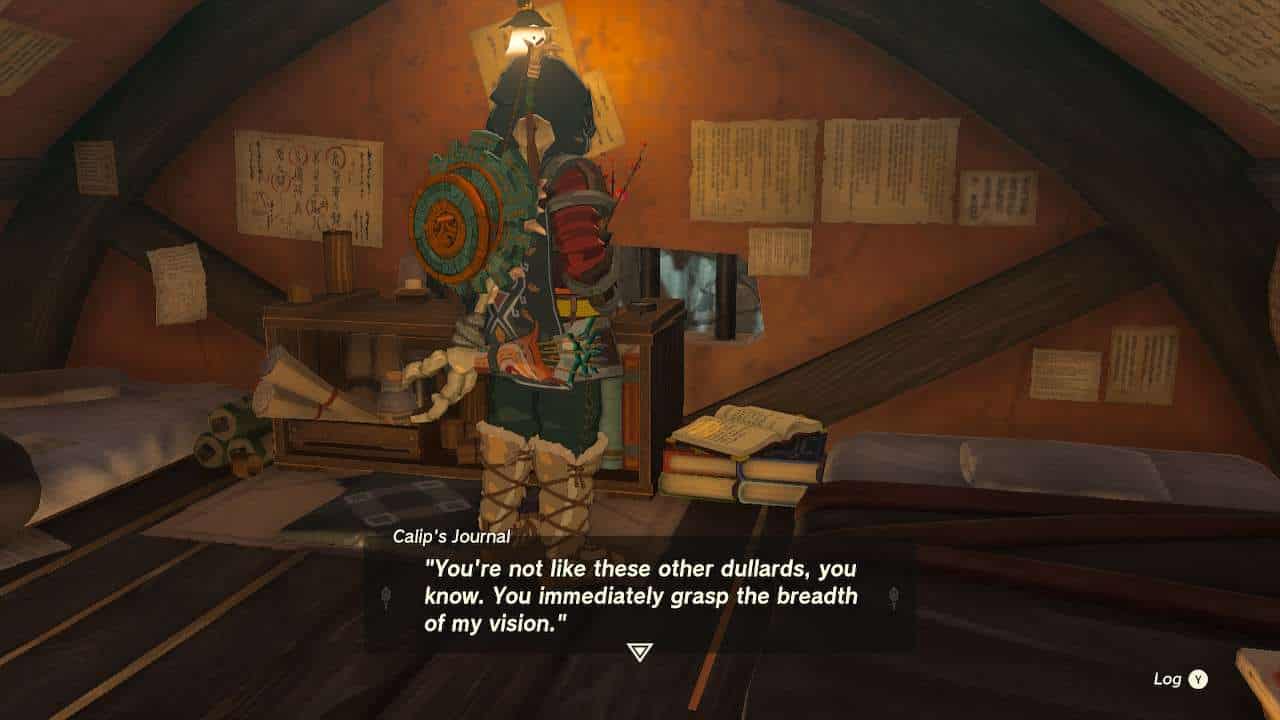
This is gay as hell. And unlike Bolson, it’s explicitly gay as hell. There’s very little question that Bolson is gay-coded, sure, but this is a man explicitly expressing his flustered attraction to another man in gorgeous prose, while also acknowledging that he cannot admit that feeling openly. This is how you write a queer character; leave no questions that they are indeed gay, have them express their feelings in an honest way, and even acknowledge that there may be personal or societal barriers preventing them from sharing those feelings.
Where Bolson was a sweet, if basic, touch and Vilia was a poorly thought out mistake, Calip is a step in the right direction for Zelda and Nintendo as a whole. Hyrule has been through a lot over the course of the series; I’m sure there are queer people scattered all across the map that Link could run into eventually, should writers choose to include them, to truly make it Queers of the Kingdom.
The Legend of Zelda: Tears of the Kingdom
- Release Date: May 12, 2023
- Platform(s): Nintendo Switch
- Genre(s): Action, Action Adventure, Adventure
